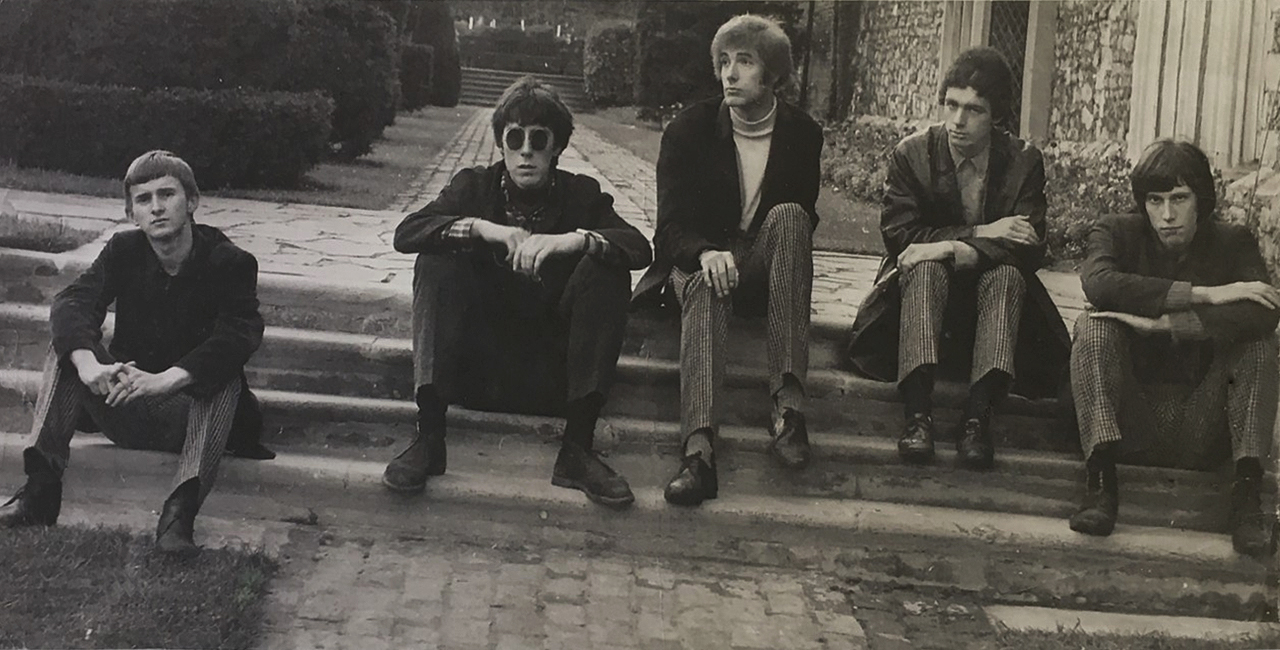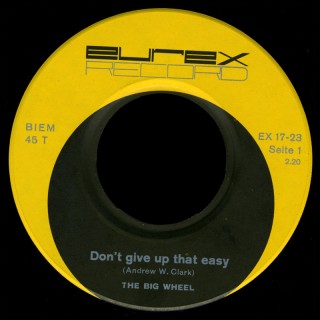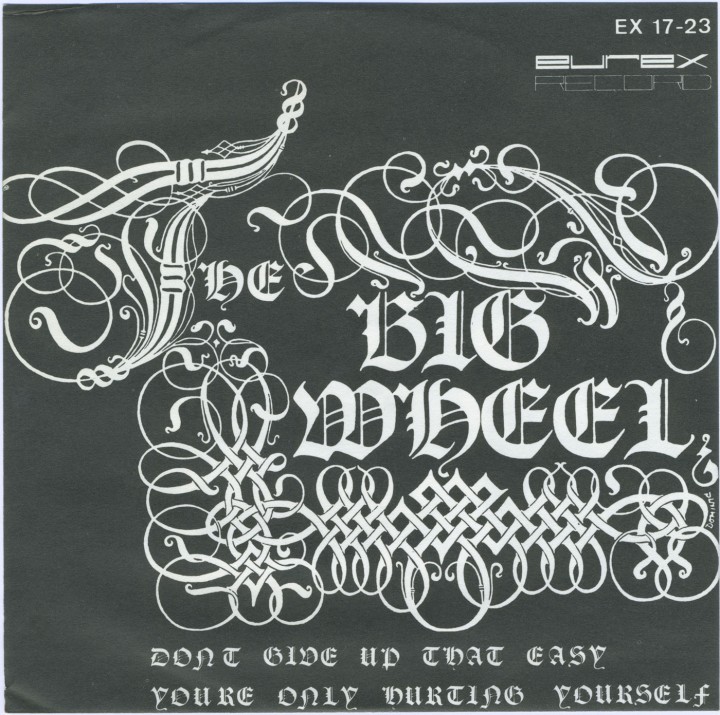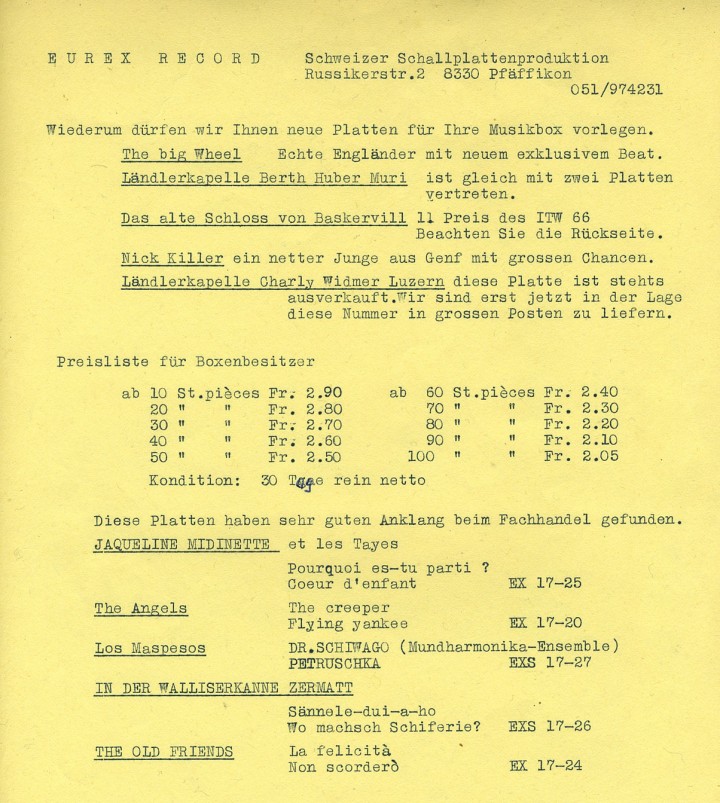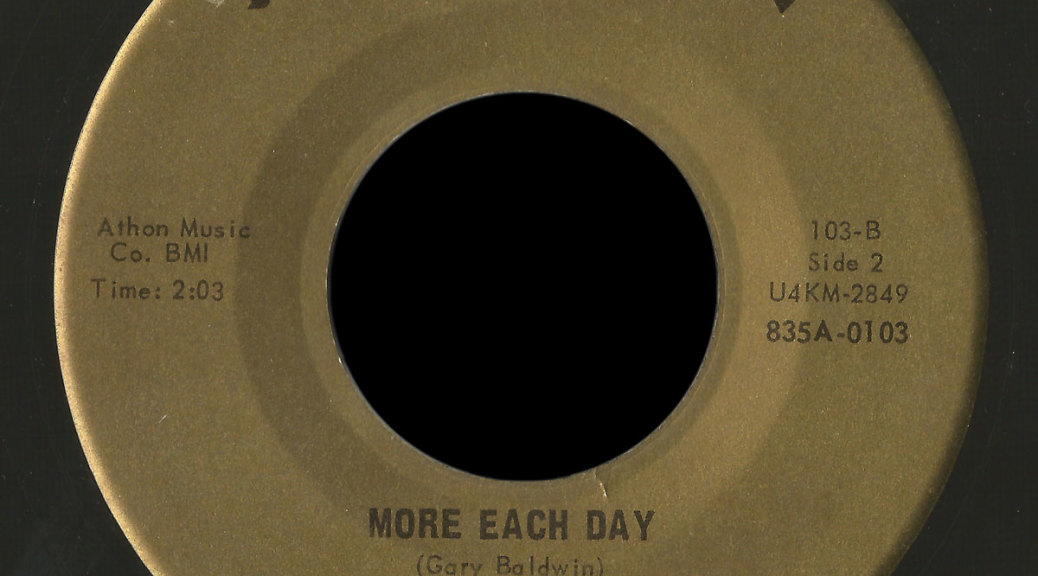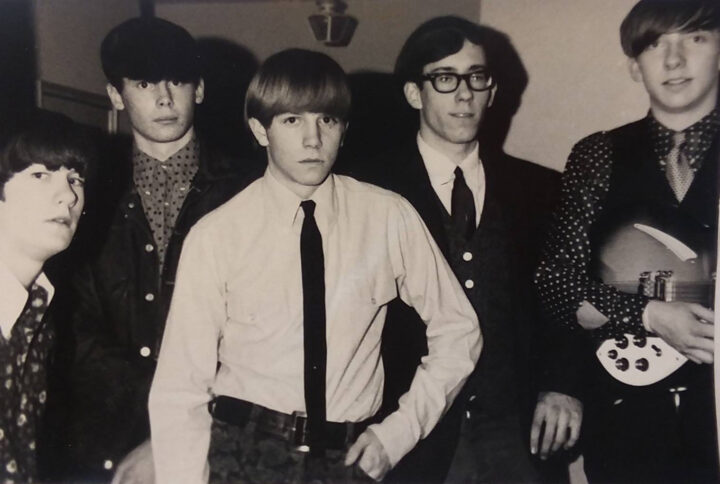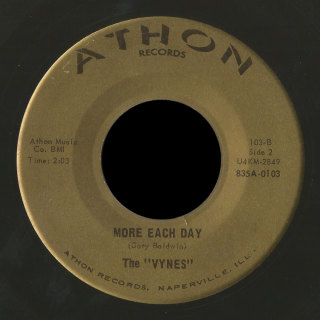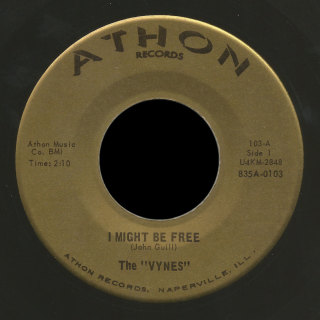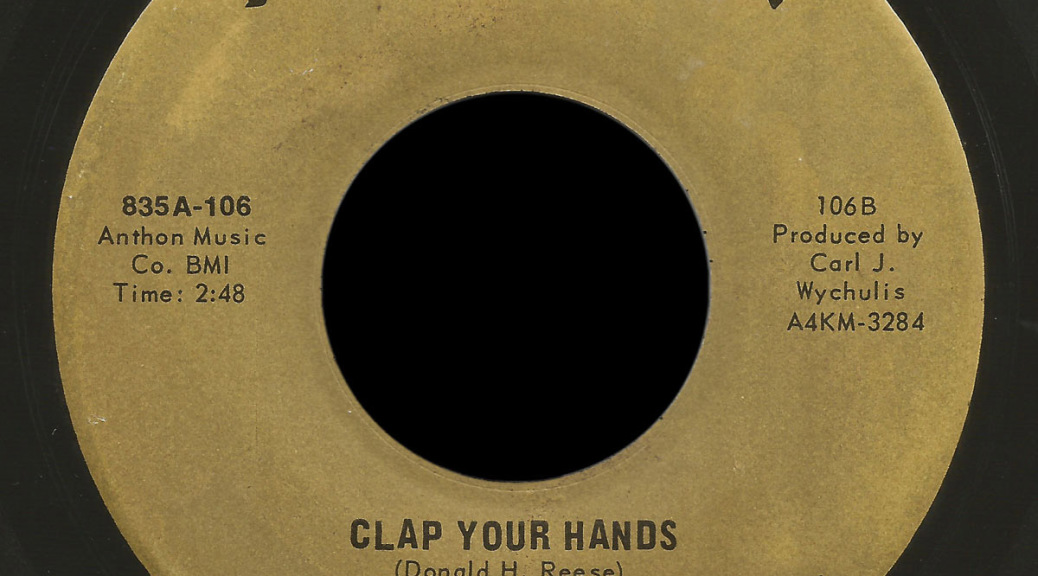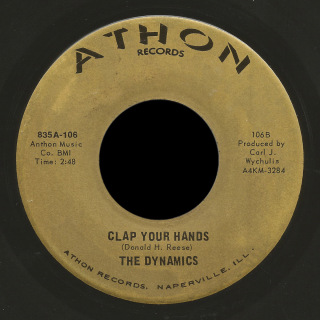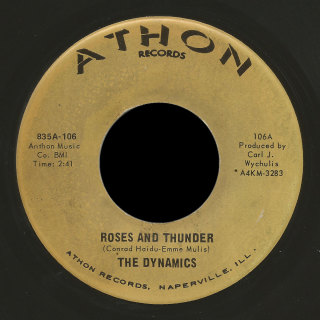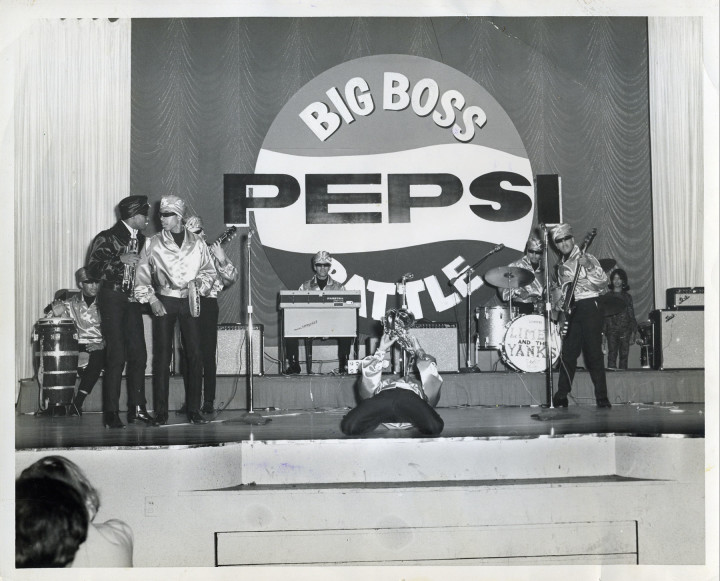
Lester Smith – trumpet player and band leader
Luke Flowers – lead vocals and tambourine
Al McKay – guitar (replaced by J.D. Luna)
Arthur Cooper – horns
Wayne Davis – tenor sax
Olaf Tweedy – keyboards
Dale Thalley – bass
Ralph Johnson – drums
Robert – percussion
Turbelettes (vocals):
Georgetta Denmark
Zettie Denmark
Iris Flowers
A few years ago I posted the program to the 1966 KHJ 93 Big Boss Battle of the Bands, which listed the Teen Turbans from Los Angeles High. Guitarist J. D. Luna sent in these photos and wrote about the group:

I was the guitarist in the Teen Turbans from L.A. High school at the time of the Hollywood Palladium Final, when The Teen Turbans won the Boss KHJ/Pepsi Battle of the Bands. I have some pictures that the dad of our percussionist took of us.
The Teen Turbans were an all black band, except for me, who snuck in when their funky Telecaster master left and they needed someone quick. I played a Les Paul with P90’s and a Tele through a four-ten Tender Bassman.
The drummer was Ralph Johnson, who later went on to Earth, Wind and Fire fame. In fact, the guitar player I replaced was Al McKay, who of course also went on to Earth, Wind and Fire. Lester, the band leader, is a nephew of Louis Armstrong, and was a master at directing and cuing the band (and not surprisingly, was a great trumpet soloist!). All the players came from families with musical backgrounds, and all had tremendous performing ability. I was very lucky to be there.
At the Palladium final we played on Limey & the Yanks equipment and I plugged into what I think was a Super Reverb that must have been set on eleven. I was so nervous I didn’t think to check the dials. So when I struck the first chord of “You Can’t Sit Down” my turban almost came off and the Paul seemed to be playing itself. When my solo came up I felt I had control of the stick and was ready to channel Freddie King … so I did!
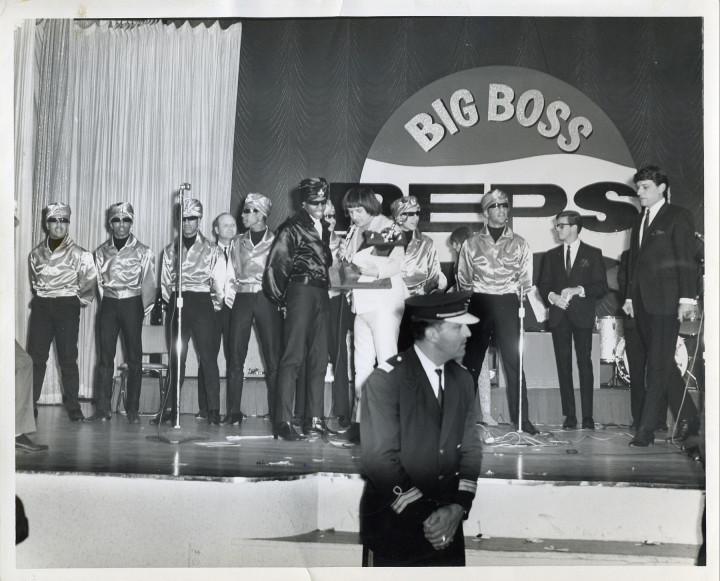
We got a complete set of instruments and amps at the Fender factory and they took pictures. I’m not sure what the deal was with the drums and the brass instruments, but something was worked out with our manager, who was the father of two of the singers. I noticed somewhere on your site that no recording time had been promised, yet somehow we ended up at a studio. I have no idea when “We Need to Be Loved” was done, but probably after I had left the band.
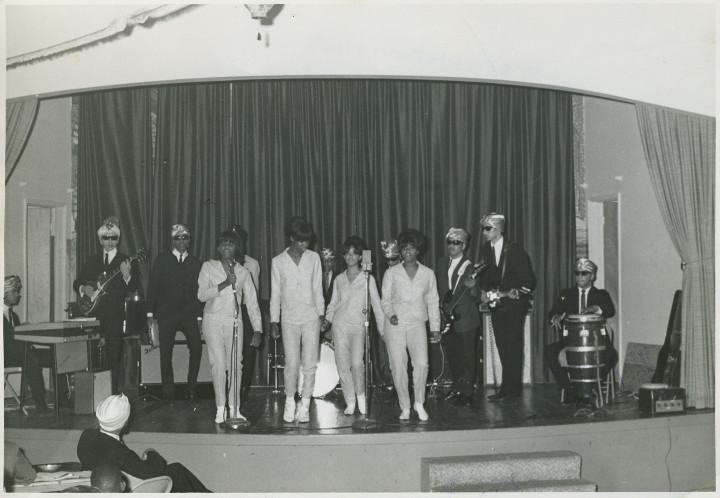
This photo [above] was taken at a Knights of Columbus Hall on Vermont Ave. just south of Sunset Blvd, in Los Angeles, circa 1965. This was a showcase set up by our manager to help us get some local exposure. The manager is the fellow sitting in the audience with a turban just like the ones we wore. Everybody called him Pops; he was the dad of one of the girl singers and the guy singer in the band. I’m the guitar player standing on the far left, just to the right of the keyboard player. I’m playing my gold top Les Paul.
We got to play at Ciro’s on the strip, The Hullabaloo, which was also a Hollywood club, and a teen club in north Hollywood known as The Cinnamon Cinder that Bob Eubanks ran.
My experience with the Teen Turbans was the launching point for a lifelong career and love affair with music that continues to this day. I learned a tremendous amount not only about music, but also about how bands should and could work together, and that experience served me extremely well as I went on to work as a a professional musician, songwriter, teacher, band director and studio engineer.
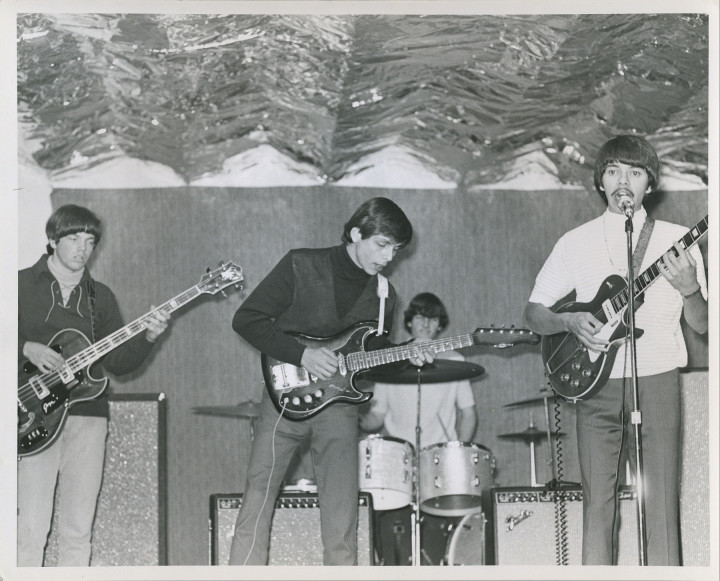
After the Turbans, I performed with various groups through the Musicians Union Local 47 and on my own and worked the club circuit on the West Coast. Two of the bands I worked with were booked by the Gail McConkey booking agency out of Hollywood. Backstreet was Chip Catrow on bass, Boomer on drums, Bob Norsoff on lead and rhythm guitar and me on lead, rhythm guitar and vocals. We added Jeff Davis on Hammond organ later. This would have been around 1968-69.
Another band was booked by the Howard King agency; that band included Dick Dodd of the Standells as our front singer. I also later managed a music store in Lawndale (south of Los Angeles) called Hogan’s Music, which became locally famous for its clientele, which included the Beach Boys.
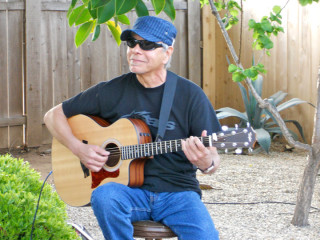
I began working as a recording engineer at various studios in the South Bay and eventually became a post-production recording engineer for film and television. I produced a female vocalist, Kim Gile, in the Santa Monica area, and we wrote and performed original R&B, rock and soul. I also built a band around this artist and we worked the Southern California club circuit for 10 years in the 90s and early 2000s.
For the past 12 years, I’ve been focused on playing solo acoustic guitar instrumentals, in the style of people like Chet Atkins, Tommy Emmanuel and other fingerstyle players. I perform locally (in north San Diego County) and also teach guitar.
J.D. Luna
Al McKay and the Turbans cut a single “Rubber Legs” / “Bear Meetin'” on Cenco 108 in early 1966, which likely predated J.D. Luna’s time with the band.
I do not know if there is any connection to two other Cenco singles: Fred and the Turbins “Till There Was You” / “Bernadine” on Cenco 111, and the Turbines “What More Can I Say” / “We Got to Start Over” on Cenco 116.
The Teen Turbans received other press notices including one for a benefit at P.J.s with Aaron McNeil and the Ike Isaacs Trio on August 27, 1967. The last notice I can find for the Turbans was on December 19, 1968 when the Southwest Topics-Wave – Southwestern Sun reported: “Music for dancing was furnished by the Teen Turbans and Turbanettes, and guest stars were Richard and Willie, and singer Diane Johnson.”


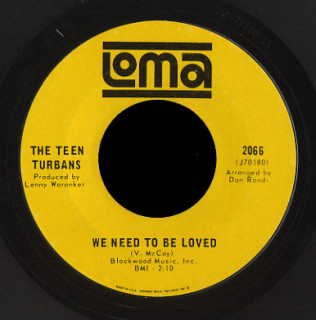
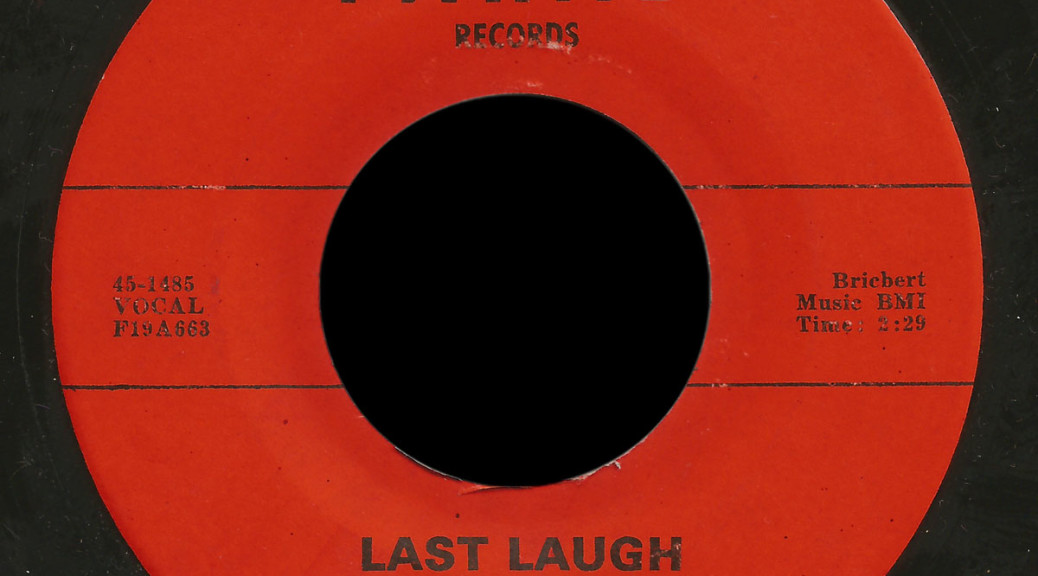
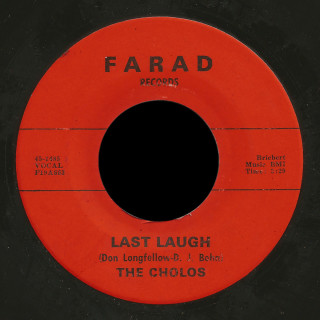
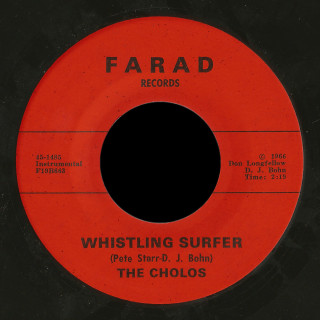
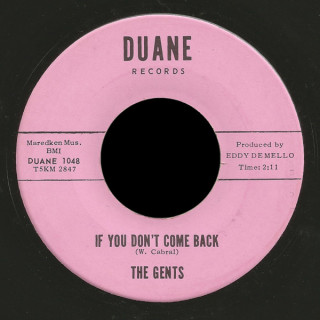
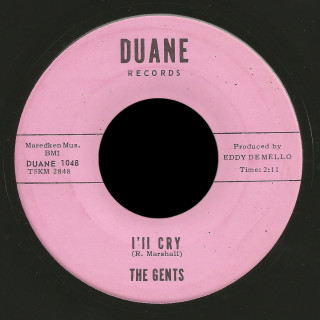
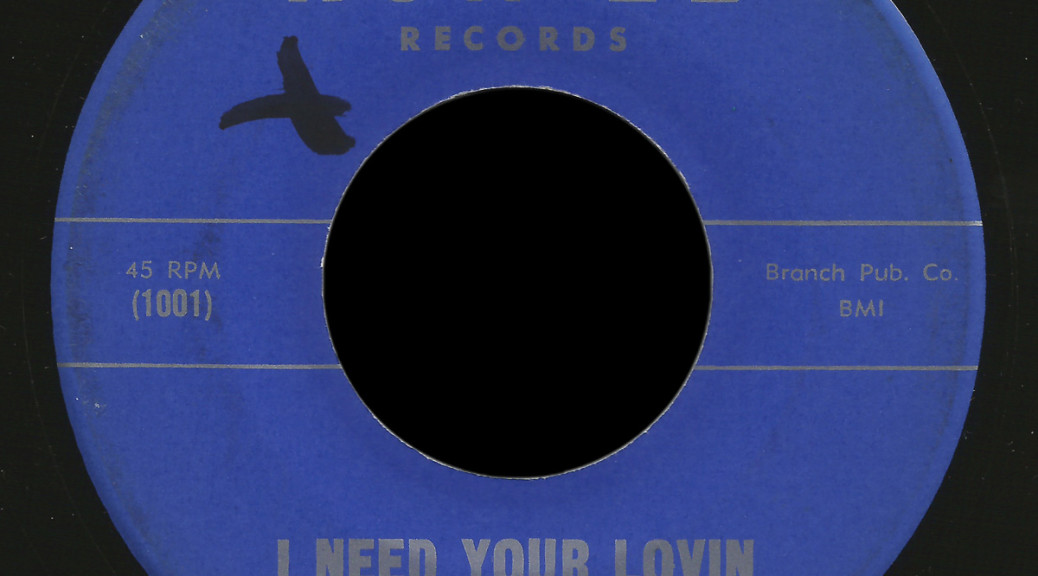
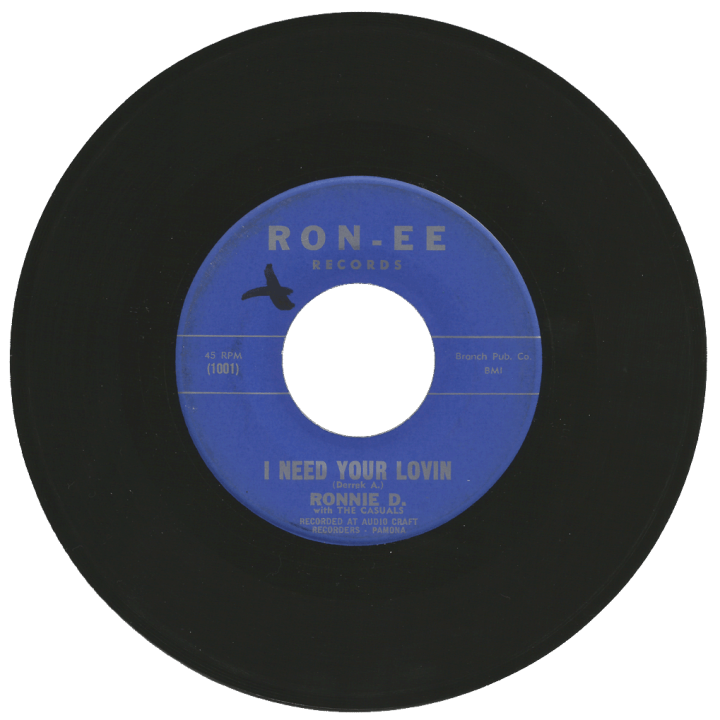
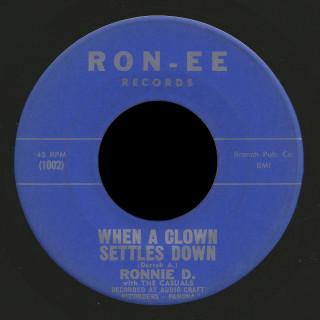
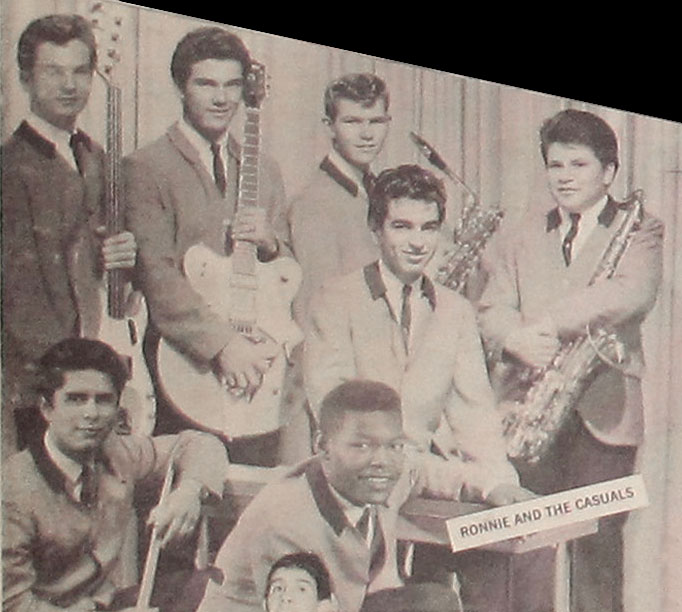
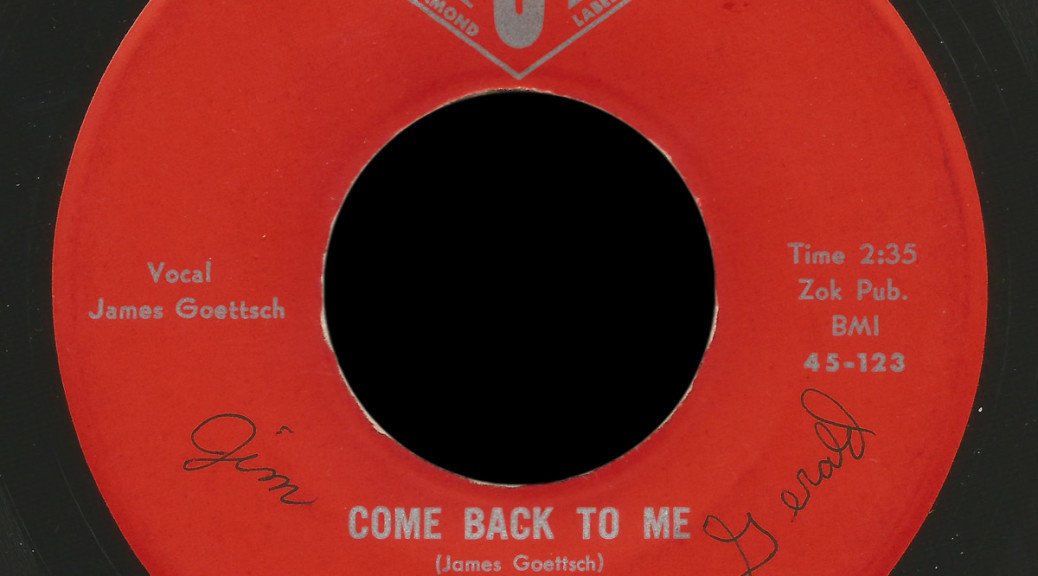
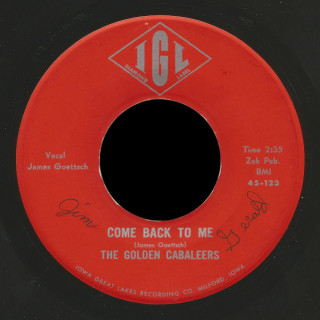
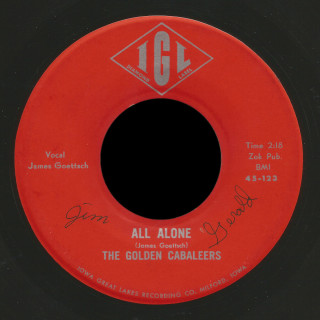
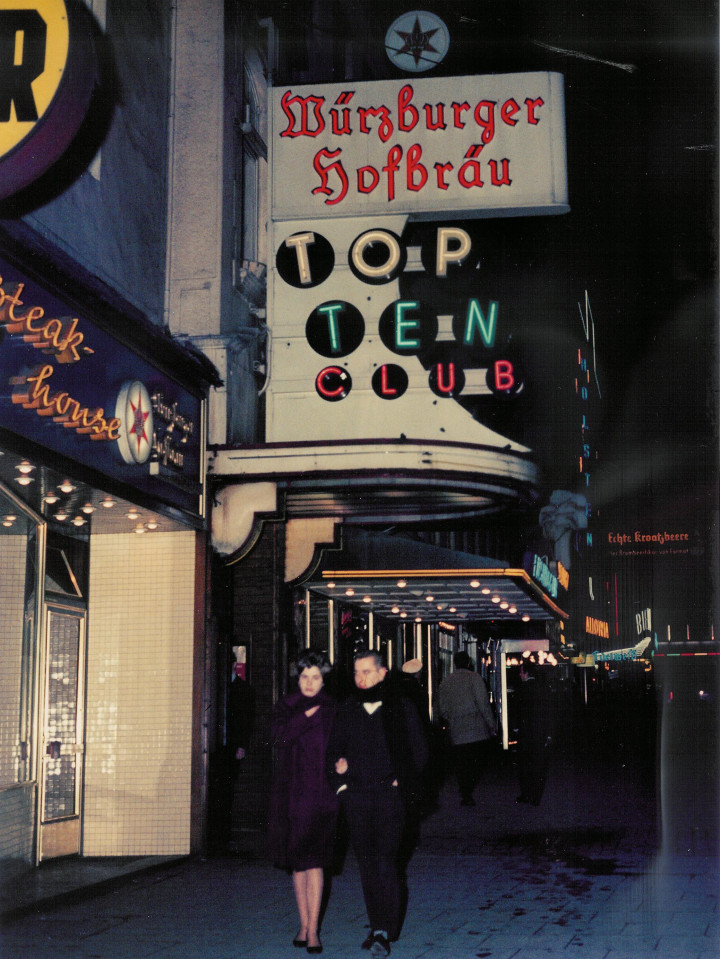
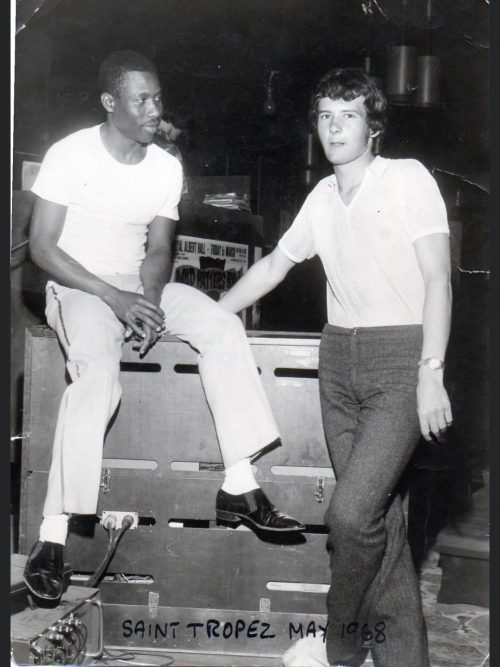
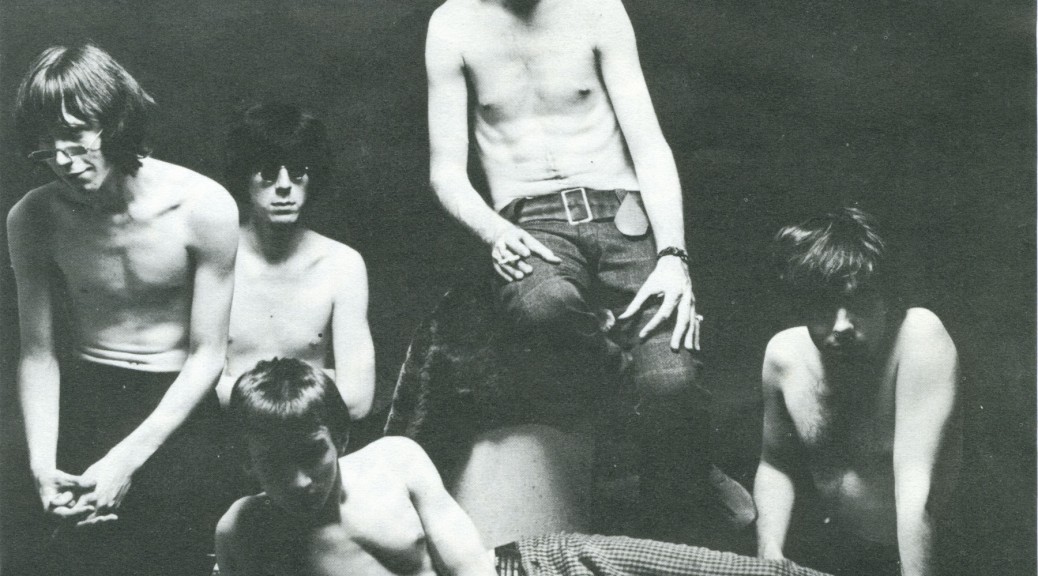
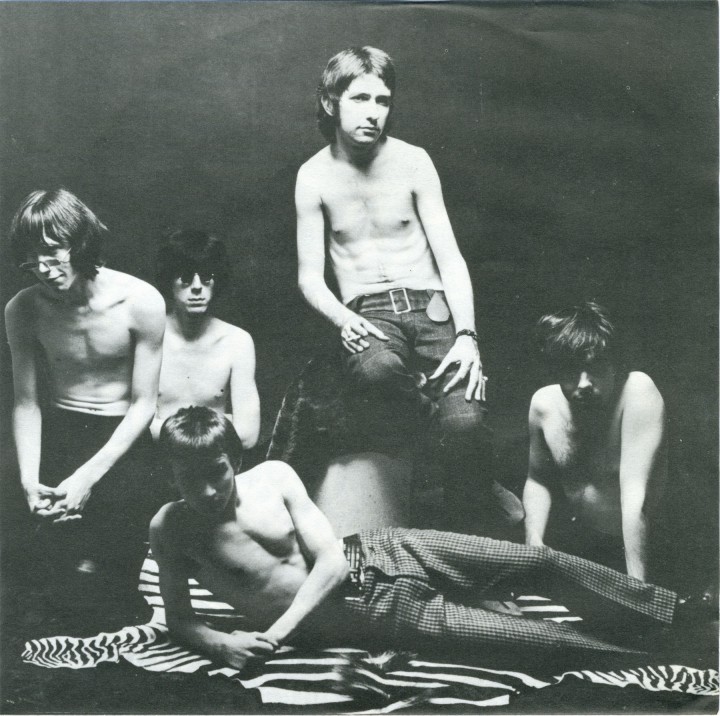
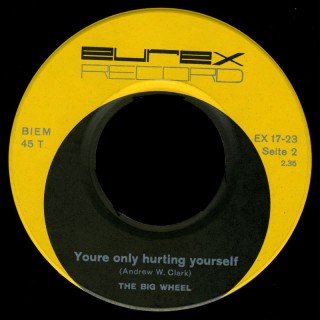
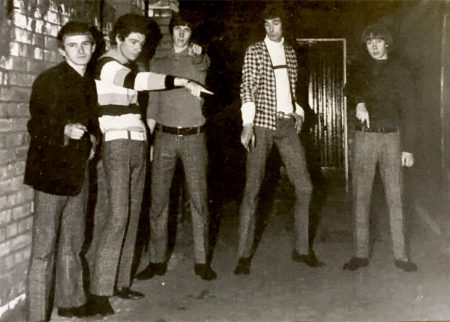
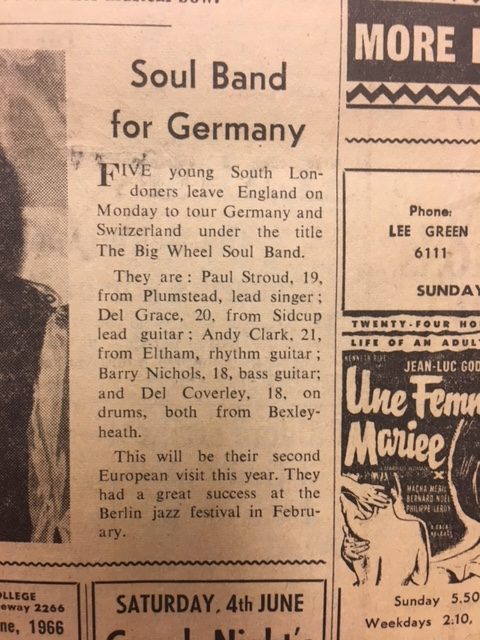 Around April 1966, Mike Manners dropped out and Andy Clark from The Epitaph Soul Band took his place.
Around April 1966, Mike Manners dropped out and Andy Clark from The Epitaph Soul Band took his place.